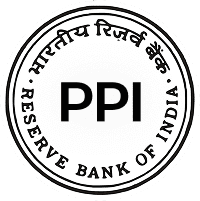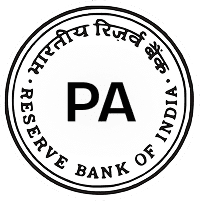What is UPI International Transfer?
UPI International Transfer is a payment feature that enables Indian users to pay supported international businesses in partner countries through their UPI apps. Instead of using a card or completing a bank transfer, customers can make cross-border payments in just a few taps using apps like BHIM, PhonePe, or Paytm.
The payment is initiated in Indian Rupees and then converted into the required foreign currency through a regulated payment platform. Everything happens within relevant RBI, FEMA, and NIPL cross-border guidelines, allowing international businesses to receive funds smoothly while customers enjoy the same simple UPI experience they use for everyday payments.
How to Make an International Transaction Using UPI
UPI International allows Indian users to make payments outside India in countries where UPI acceptance has been officially enabled. Instead of using a card or withdrawing foreign currency, customers can simply scan a supported QR code and complete the payment using their existing UPI app.
Here is how the process works:
- Visit a merchant or payment point in a country where UPI International is supported.
- Choose the UPI option or scan the UPI-compatible QR code displayed at the store.
- Open your UPI app, such as BHIM, PhonePe, or Paytm, and scan the QR code.
- The amount will appear in the local currency, along with the INR equivalent for your reference.
- Approve the payment using your UPI PIN.
- The amount is deducted in Indian Rupees and paid to the merchant in their local currency.
- You receive instant confirmation in your UPI app.
This process works only in partner countries and only if your issuing bank has enabled UPI International. It offers a fast, secure, and convenient way for Indian users to make cross-border payments.
Why International Businesses Must Accept UPI Payments from India
India is the fastest-growing digital economy in the world, and its pace is unmatched. According to the Press Information Bureau, India’s digital economy is projected to contribute nearly one-fifth of the country’s GDP by 2029–30. This growth is happening at almost twice the rate of the overall economy, driven by large-scale internet access, digital platforms, and the rapid consumer adoption of tools like UPI payments.
With more than 13 billion UPI transactions taking place every month, this payment system has become the first choice across India’s cities, small towns, and even rural areas. For international businesses offering services or products to Indian customers, enabling UPI payment is no longer optional. It is a requirement to stay competitive and accessible.
Indian consumers rely on UPI payment apps such as Google Pay, PhonePe, and Paytm for nearly every daily transaction. When shopping online, they expect to see UPI as a payment option. If they don’t, many simply abandon their carts. This is particularly common for low and mid-value purchases where other methods like cards or net banking seem slow or unnecessary.
The growing relevance of UPI for international payments makes it possible for businesses outside India to accept rupee payments and receive settlements in foreign currencies. This can be done without opening an office or registering a company in India. Global SaaS platforms, independent consultants, digital product sellers, and educators are already using this model.
In India, convenience leads to conversion. Offering UPI payment is the most direct way for international businesses to meet customer expectations and drive more sales.
Read more: How to Make a UPI Payment?
Apps for International UPI Payment
Only selected UPI apps currently support international transactions in countries where UPI International has been enabled by NPCI. These apps allow Indian users to scan supported QR codes, approve cross-border payments and complete the transaction in Indian Rupees, while the backend handles currency conversion securely.
The verified UPI apps that support international payments include:
BHIM UPI
The official app from NPCI, BHIM is the primary platform for UPI International. It is the most widely supported app across all active UPI International corridors.
PhonePe
PhonePe supports UPI International in enabled regions such as Singapore, UAE, Mauritius, and Nepal. Users can scan supported QR codes and complete the transaction through their existing UPI account.
Paytm
Paytm allows users to make UPI-based international payments in supported countries. The app displays the amount in local currency and its INR equivalent before confirming the payment.
Note:
Support varies by bank. A user’s bank must activate UPI International on their account for these apps to work outside India.
Benefits of Using International UPI Transfers
International UPI transfers offer a familiar and seamless way for Indian users to make payments while travelling or transacting abroad. Instead of relying on cards, currency exchange or bank transfers, users can simply scan a QR code with their UPI app and complete the payment instantly. This makes cross-border spending more convenient and cost-effective.
Here are the key benefits:
Fast and Real-Time Payments
UPI international payments are processed instantly. Users do not need to wait for authorisation, OTPs, or complicated verifications, which speeds up checkout at stores, restaurant,s and tourist locations.
Lower Costs Compared to Cards
Traditional international card transactions often involve multiple fees and high forex markups. UPI international payments generally offer more transparent and competitive conversion rates through the bank or payment network.
No Need to Carry Local Currency
Travellers can pay directly in local currency without exchanging cash. This reduces the need to withdraw foreign money or carry multiple cards while travelling.
Simple and Familiar Experience
The process is exactly the same as using UPI in India. Users simply scan a QR code, check the amount and approve the payment using their existing UPI PIN.
Higher Security
UPI international transactions use the same security standards as domestic UPI payments. Sensitive card details or bank information are never shared with merchants.
Instant Confirmation
Once a payment is approved, both the user and merchant receive real-time confirmation, making it suitable for everyday purchases as well as ticketing and travel services.
As more countries integrate UPI acceptance, international travellers benefit from quicker payments, fewer fees, and a universally familiar experience.
How International UPI Payments Help NRIs and International Traders
International UPI acceptance creates opportunities not only for travellers but also for NRIs, freelancers and global traders who receive payments from Indian customers. With UPI becoming a preferred payment method in India, enabling UPI-based cross-border payments allows these groups to collect money more efficiently.
Faster Payments From Indian Customers
NRIs and international merchants receive immediate payment confirmation when Indian users pay via UPI, reducing delays and improving cash flow.
Lower Costs Compared to Traditional Transfers
Conventional international transfers involve higher fees and processing time. UPI-based payments routed through authorised partners offer more competitive forex rates and fewer intermediaries.
No Local Entity or Indian Bank Account Required
NRIs and global merchants can receive UPI payments through regulated cross-border payment providers when using an aggregator offering Import Flow or cross-border UPI collection. This removes the need to open an Indian bank account or set up a local business entity.
Better Conversion for India-Facing Businesses
Since Indian customers prefer UPI, offering this payment option increases trust and improves the chances of successful payments.
Suitable for Multiple Use Cases
International tuition providers, SaaS tools, e-commerce sellers, consultants, freelancers, and travel operators can all benefit from accepting UPI payments from Indian customers.
How to Receive International UPI Payments
Receiving international UPI payments is now simpler for businesses and individuals operating outside India. Instead of setting up an entity in India or maintaining a local bank account, you can use an RBI-regulated payment platform that handles the entire process on your behalf. These platforms collect money in Indian Rupees, convert it into your preferred currency and settle it into your international bank account securely.
Here is how the process works:
1. Integrate with an RBI-approved payment partner
You need to onboard with a licensed payment aggregator or cross-border payment platform that supports UPI international collections. These partners include Razorpay Import Flow, Paytm International Gateway, Cashfree Global Collections and others.
2. Share UPI as a payment option with customers
Once the integration is complete, your Indian customers will see UPI as a payment method at checkout. They can pay using BHIM, PhonePe, or Paytm.
3. Customers pay in INR through their UPI app
Your customer enters their UPI ID or scans a QR code. The payment is processed instantly in Indian Rupees.
4. The payment partner converts the amount into foreign currency
After receiving the INR amount, the payment platform converts it to your chosen currency such as USD, EUR or GBP using authorised dealer banks.
5. Settlement is made to your international account
The converted amount is transferred to your overseas bank account within the settlement timeline provided by your payment partner, usually within one to three working days.
6. You receive compliance documents automatically
You get a Foreign Inward Remittance Advice (FIRA) or equivalent documentation for each payment along with purpose codes, which ensures smooth accounting and regulatory compliance.
This model allows businesses, freelancers, and global merchants to receive UPI payments from India without maintaining local infrastructure. It is a fast, compliant, and cost-effective way to unlock the growing Indian customer base.
Can You Accept UPI Payments Without an Indian Entity?
Traditionally, foreign businesses that wanted to collect payments from Indian customers had to establish a local presence. This meant setting up an Indian private limited company, opening a domestic bank account, registering under GST, and handling tax filings. For most international businesses, this created unnecessary cost and legal complexity, especially if the goal was only to accept occasional payments from Indian users.
However, that barrier no longer exists. With the rise of regulated payment platforms designed for cross-border use, it is now possible to accept UPI payments without opening a company in India. Solutions like Razorpay’s Import Flow and Paytm’s international checkout allow global businesses to tap into UPI without local incorporation.
These platforms work as licensed intermediaries. They hold the required approvals from the Reserve Bank of India to collect payments in Indian rupees and convert them into foreign currency before transferring the settlement to your global bank account. This eliminates the need for a local Indian bank, physical office, or compliance with domestic tax obligations.
The customer pays you through UPI payment apps like PhonePe or Google Pay. You receive the funds in your preferred currency, such as USD or EUR. The entire transaction remains compliant with India’s foreign exchange laws, while your business avoids the hassle of setting up a legal structure in the country.
This model has made UPI for international payments far more accessible. Today, global SaaS platforms, freelancers, and exporters use it to accept Indian customer payments smoothly, without dealing with local incorporation or regulatory delays.
UPI Payment Collection Workflow for International Businesses
Here’s how a typical UPI payment transaction flows when an international business collects payment from an Indian customer:
- The customer reaches your checkout page and selects UPI payment as their preferred option.
- They enter their UPI payment app ID (like name@bank or mobile@UPI) or scan a QR code generated at checkout.
- The payment request is routed through a licensed Indian UPI payment gateway integration provider such as Razorpay or Paytm.
- The customer receives a prompt on their UPI payment app to approve the transaction.
- Upon approval, funds are debited instantly from their Indian bank account and credited to the gateway provider’s INR pool account.
- The provider handles currency conversion (INR to USD, EUR, or GBP) at competitive forex rates.
- The foreign currency equivalent is remitted to your international business account, typically within 1 to 2 working days.
- You receive a Foreign Inward Remittance Advice (FIRA) along with purpose code tagging for regulatory compliance.
- The transaction is logged in your dashboard with full tracking, settlement status, and customer details.
- Refunds, if needed, can be issued directly back to the customer’s UPI payment app using the same interface.
- This process ensures fast, secure, and compliant settlement of UPI for international payments without any need for an Indian bank account or legal entity.
UPI Payment Gateway Integration Options for International Merchants
International businesses that want to accept UPI payments from Indian customers can integrate with several trusted Indian platforms. These gateways simplify the process, provide compliance support, and offer reliable settlement mechanisms. Here are the top Indian platforms supporting UPI for international payments:
Razorpay
Razorpay offers a dedicated solution that allows foreign businesses to collect payments through UPI payment apps without needing a registered Indian entity. It supports integration via plugins and APIs, enables currency conversion, and provides settlement in international currencies like USD and EUR. The platform ensures a smooth onboarding experience with full compliance.
Paytm
Paytm’s international merchant gateway allows foreign businesses to accept payments from Indian customers using UPI payment apps, debit cards, net banking, and wallets. It provides advanced features such as auto-refunds, dynamic currency conversion, and a dashboard to track transaction performance. Paytm also supports recurring billing with UPI Autopay.
Cashfree Payments
Cashfree offers a powerful suite for UPI payment gateway integration, enabling real-time payments, QR code generation, and link-based UPI collections. It supports foreign settlement accounts, offers quick disbursals, and provides documentation like FIRA for compliance. Cashfree is known for its fast T+1 settlement cycles.
PayU
PayU provides extensive tools for international businesses targeting Indian consumers. It supports UPI payment collection through seamless checkout experiences and real-time status updates. With a focus on success rates and customer retention, PayU also enables easy refunds and flexible settlement options.
CCAvenue
CCAvenue supports cross-border collections through its integration with multiple UPI payment apps. It offers a secure and scalable gateway for Indian customers paying in INR, with backend tools for reconciliation, refund management, and analytics. CCAvenue is part of Infibeam Avenues, one of India’s oldest digital payment companies.
BillDesk
BillDesk is a long-established Indian payment platform that enables UPI payment collection for both domestic and cross-border transactions. It provides reliable infrastructure, high uptime, and regulatory compliance. Businesses can integrate through APIs and collect INR payments directly from Indian customers.
EnKash
EnKash allows UPI collections via QR codes, payment links, and UPI IDs, making it flexible for B2C and B2B payment flows. EnKash holds a payment aggregator license from RBI.
These platforms give international merchants the tools needed to accept UPI payment from Indian customers without opening a local entity. Each offers unique advantages based on business size, integration preference, and volume of transactions.
Compliance Checklist: Legal and Documentation Requirements
To accept UPI payment from Indian customers as a foreign business, you must stay compliant with India’s financial regulations. Here is a detailed checklist of what you need to ensure:
- You must collect payments through a licensed Indian payment aggregator that is authorized by the Reserve Bank of India (RBI).
- Each UPI payment must be tagged with the correct purpose code. This code defines the nature of the payment (e.g., export of services, software development, or consulting).
- After each transaction, you must request or automatically receive a Foreign Inward Remittance Advice (FIRA). This document confirms the receipt of foreign exchange and is needed for accounting and audits.
- The UPI payment gateway integration must support compliant conversion of INR to your preferred currency through an Authorized Dealer Category-I bank.
- GST requirements depend on the type of service (e.g., OIDAR). Many foreign businesses without physical presence are exempt, but classification must be verified.. However, you must ensure the payment platform you use is handling tax classification correctly.
- The payment gateway should offer automatic FIRA generation and purpose code assignment to avoid manual intervention and reduce the risk of errors.
- Maintain a digital or physical record of all UPI international payments for at least five years, as required by FEMA (Foreign Exchange Management Act) compliance.
- Refunds, if processed, should be initiated through the same channel using the original UPI reference ID to ensure transparency and traceability.
- Reconciliation reports should be downloaded regularly from your payment dashboard to keep internal accounting aligned with settlements.
- Before onboarding with a provider, verify their RBI license status and ensure they are allowed to facilitate UPI payment apps for cross-border collections.
Read more: How to Easily Create UPI Payment Links and Streamline Your Collections
Currency Settlement and Forex Fees: What to Expect
When accepting UPI payment from Indian customers, the funds you collect are in Indian Rupees. Since your business operates outside India, the collected INR must be converted into your preferred foreign currency like USD, EUR, or GBP. This currency conversion and settlement process is managed by the payment gateway you use, and understanding its structure is important to avoid unexpected deductions or delays.
Settlement timelines vary by provider. Razorpay and Paytm typically settle the converted foreign currency into your international account within two to three business days. Cashfree and EnKash also offer similar timelines, though some platforms like Skydo provide next-day settlements. Fast settlement ensures your cash flow remains steady and helps in planning fund usage without disruptions.
Forex fees apply when the INR collected via UPI payment apps is converted to your local currency. Some gateways offer mid-market exchange rates with a fixed markup, while others include variable charges depending on the volume. For example, a small markup of 1 to 1.5 percent is common on each transaction. This is in addition to any transaction fees levied by the platform.
The UPI payment gateway integration you choose should offer clear visibility into settlement status, exchange rates used, and total deductions. A proper breakdown in your dashboard is essential for accounting and auditing. Always compare forex terms before onboarding with a provider, since even small percentage differences can impact profitability at scale.
Read more: UPI Transaction Limit
Conclusion
Enabling UPI payment is no longer an option for international businesses targeting Indian customers—it is a critical part of doing business in this market. With Indian consumers relying heavily on UPI payment apps for daily transactions, integrating this option into your checkout flow builds trust, improves conversion, and eliminates payment friction.
Thanks to advancements in fintech, accepting UPI for international payments no longer requires opening a local office or setting up an Indian bank account. Platforms like Razorpay, Paytm, Cashfree, EnKash, and others have made it simple, compliant, and quick to collect INR and settle in foreign currency. These solutions come with regulatory support, purpose code tagging, and forex settlement—all handled in the background.
If your business operates in SaaS, e-commerce, consulting, education, or digital services, integrating a UPI payment gateway is one of the most practical decisions you can make. It opens your brand to millions of ready-to-pay customers who prefer UPI over other options.
The opportunity is clear. UPI continues to dominate India’s digital payments landscape, and now global businesses can be a part of it.
FAQs
1. Can I accept UPI payments if my business is based in a tax-free country?
Yes, you can accept UPI payment from Indian customers even if you’re based in a tax-free country, as long as you use an RBI-approved payment gateway. The provider ensures compliance with India’s regulations and handles settlement in your preferred currency.
2. What happens if a customer enters the wrong UPI ID while paying?
If the UPI ID is invalid, the transaction will not be processed. Most UPI payment apps validate the UPI handle before confirming the payment, ensuring a low chance of error. You can also offer dynamic QR codes to avoid manual entry.
3. Is there a minimum or maximum transaction limit for UPI payments to international businesses?
Yes, most UPIs for international payments follow NPCI’s default transaction limits. Generally, the upper limit is ₹1 lakh per transaction, though this may vary based on the customer’s bank and the payment gateway you use.
4. Can I receive recurring payments through UPI from Indian customers?
Yes, platforms that support UPI Autopay for eligible cross-border billing allow you to collect recurring payments from Indian customers using UPI payment apps. This is ideal for SaaS, subscription models, or digital services that bill monthly or yearly.
5. Do international refunds work the same way for UPI transactions?
Refunds for UPI payment transactions must be initiated through the same payment gateway that was used for collection. The amount is returned directly to the customer’s UPI-linked bank account. Refund timelines are usually short, ranging from 24 to 72 hours.
6. Can UPI be used for international payments?
Yes. UPI can be used for international merchant payments in countries where NPCI has enabled UPI International in partnership with local payment networks. Users can scan supported QR codes and pay in INR.
7. Can businesses outside India accept UPI payments?
Yes. International businesses can accept UPI payments from Indian customers through RBI-approved payment aggregators without opening an Indian company or bank account.
8. Does UPI work outside India for Indian users?
Yes, UPI works outside India. The supported regions include such as Singapore, the UAE, Mauritius, Nepal, Bhutan, and selected locations in Europe. Users pay in INR, and the merchant receives local currency.
9. What is the UPI limit for international payments?
Most UPI international transactions follow NPCI’s standard limit of ₹1 lakh per transaction, but limits can vary by bank, country, and payment aggregator.
10. How do international merchants receive money from UPI payments?
The payment is collected in INR through UPI, converted into a foreign currency by a regulated payment provider, and settled into the merchant’s international bank account, along with FIRA documentation.








